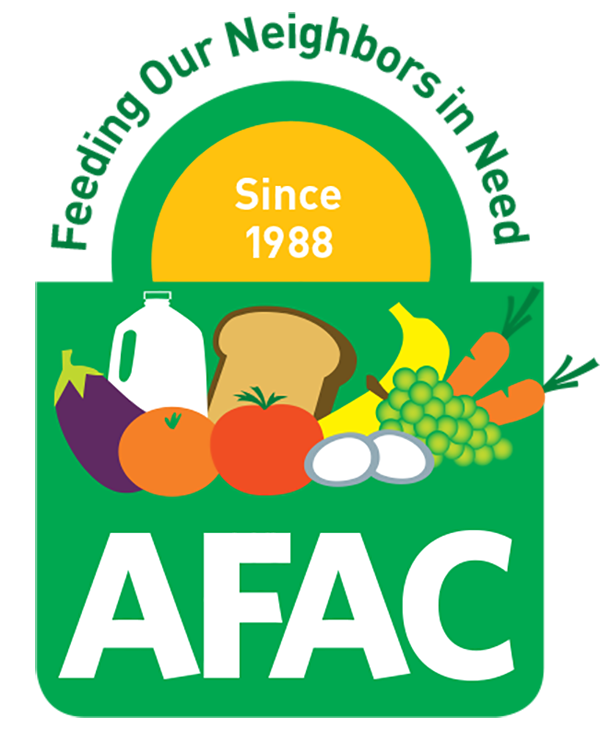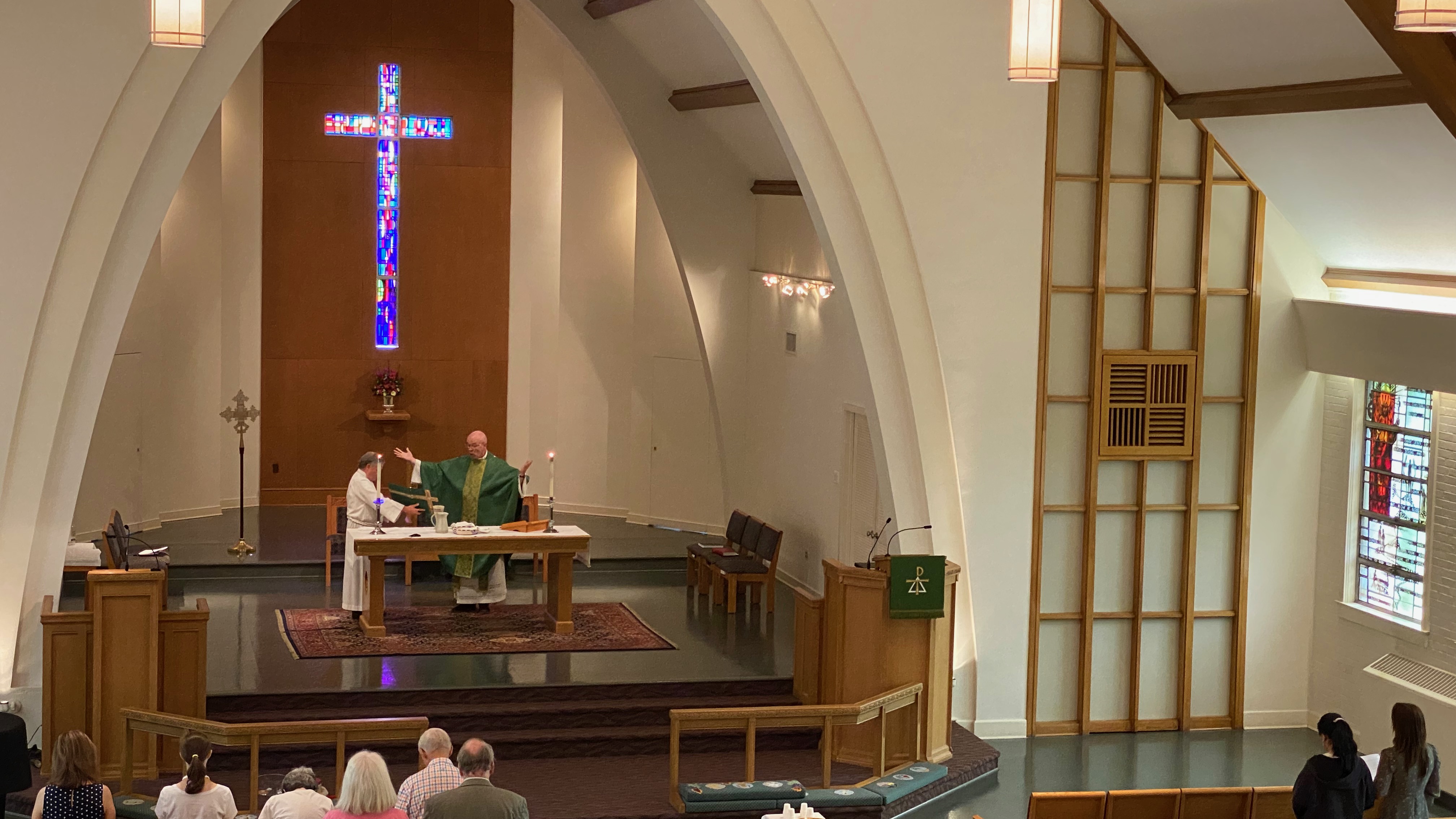CHOIR ANTHEMS:
“Adam Lay Ybounden” Robert Powell (1932)
Adam lay ybounden relates the events of Genesis, Chapter 3. In medieval theology, Adam was supposed to have remained in bonds with the other patriarchs in the limbus patrum from the time of his death until the crucifixion of Christ (the "4000 winters"). The second verse narrates the Fall of Man following Adam's temptation by Eve and the serpent. John Speirs suggests that there is a tone of astonishment, almost incredulity in the phrase "and all was for an apple", noting "an apple, such as a boy might steal from an orchard, seems such a little thing to produce such overwhelming consequences. Yet so it must be because clerks say so. It is in their book (probably meaning the Vulgate itself)."
The third verse suggests the subsequent redemption of man by the birth of Jesus Christ by Mary, who was to become the Queen of Heaven as a result, and thus the song concludes on a positive note hinting at Thomas Aquinas' concept of the "felix culpa" (blessed fault). Paul Morris suggests that the text's evocation of Genesis implies a "fall upwards”. Speirs suggests that the lyric retells the story in a particularly human way: "The doctrine of the song is perfectly orthodox...but here is expressed very individually and humanly. The movement of the song reproduces very surely the movements of a human mind."
Adam lay ybounden, bounden in a bond,
Four thousand winter thought he not too long;
And all was for an apple, and apple that he took,
As clerkes finden written in their book.
Ne had the apple taken been, the apple taken been,
Ne had never Our Lady ybeen heavene Queen.
Blessed be the time that apple taken was:
Therfore we moun singen: Deo Gratias.
“A Spotless Rose” Graeme Morton (1933-1995)
"Es ist ein Ros entsprungen" is a Christmas carol and Marian hymn of German origin. It is most commonly translated into English as "Lo, how a rose e'er blooming" and is also called "A Spotless Rose" and "Behold a Rose of Judah". The rose in the German text is a symbolic reference to the Virgin Mary. It is unknown who wrote the words to this German hymn but it is thought to date back to the 16th century. Over the centuries verses have been added and different music composed, One of its most famous versions is the one by Herbert Howells, who arguably more than anyone influenced British church music in the 20th century, despite not himself a believer.
A wonderful addition to the Christmas repertoire, today’s setting of "A Spotless Rose" comes to us from Australian composer Graeme Morton.
A spotless Rose is blowing Sprung from a tender root, Of ancient seers' foreshowing, Of Jesse promised fruit; Its fairest bud unfolds to light Amid the cold, cold winter And in the dark midnight.
The Rose which I am singing, Whereof Isaiah said, Is from its sweet root springing In Mary, purest Maid; For through our God's great love and might The blessed babe she bare us In a cold, cold winter's night.
“Go Tell It On The Mountain” John Abdenour (1962)
The text of this beloved spiritual was first published in Folk Song of the American Negro (1907), a study of African American folk music by John Wesley Work, Jr. The song may date back to earlier sources, but evidently the original text was lost. According to Edith McFall Work, widow of John Wesley Work, III: the verses of these songs were published by John Work, II, in place of the original ones which could not be found. In 1940 John Work, III, had the songs copyrighted and published in his book American Negro Songs.”
In American Negro Songs and Spiritual (1940), John Wesley Work, III, attributes the newer text to his uncle Frederick J. Work. "He may have composed it" [the tune], wrote J. W. Work, III. "I know he composed the verses." John, III, recalled that when he was a child, the students at Fisk University began singing this before daybreak on Christmas morning, going from building to building. Later, his arrangement for use in choral concerts by the Fisk Jubilee Singers helped to popularize the spiritual.
The refrain theme comes from Old Testament passages in which praise to God for his acts of deliverance was often shouted, both literally and metaphorically, from the mountaintops (Isa. 42:11). While the three stanzas tell the essence of the Christmas story, the refrain underscores the missionary impetus of the Christian church: "go and make disciples of all nations" (Matt. 28:19). The "go, tell," which initially applied to the singers caroling on the university campus, is a signal for us to leave the comfortable confines of Christian worship and "go, tell" the message of Christ's redemption to the whole world.
John Abdenour has composed a sprightly new tune paired with the traditional text for “Go Tell It On the Mountain.” He sang as a boy in the choir of St. Paul's Cathedral in Detroit and began organ study at the cathedral. He subsequently received degrees in Organ Performance and American History from Oberlin College. After studying law at the University of Michigan and after pursuing a brief career as an attorney, he returned to his first love, sacred music. He undertook further study of Anglican choral training in 1996, when he spent a month in St Albans, singing with and studying the Choir of St Albans Cathedral, then directed by Barry Rose. John is the Director of Music at Saint Paul’s Episcopal Church in Fairfied, CT. He is a member of the Association of Anglican Musicians, has served as Dean of the Fairfield-West Chapter of the American Guild of Organists, and has served as a faculty member of the Bridgeport AGO Pipe Organ Encounter.
Go, tell it on the mountain, over hill and everywhere;
Go, tell it on the mountain the Jesus Christ is born.
While shepherds kept their watching o'er silent flocks by night,
Behold throughout the heavens there shone a holy light.
Go, tell it on the mountain, over hill and everywhere;
Go, tell it on the mountain the Jesus Christ is born.
The shepherds feared and trembled, when lo! above the earth
Rang out the angel chorus that hailed our Savior's birth.
Go, tell it on the mountain, over hill and everywhere;
Go, tell it on the mountain the Jesus Christ is born.
Down in a lowly manger the humble Christ was born;
And God sent us salvation that blessed Christmas morn.
Go, tell it on the mountain, over hill and everywhere;
Go, tell it on the mountain the Jesus Christ is born.
“In the Bleak Mid-Winter” Harold Darke (1888-1976)
The January 1872 edition of Scribner's Monthly was the first publication of Christina Rossetti's poem “A Christmas Carol.” The poem was later titled “In the Bleak Midwinter” after the opening line and published as a hymn in the English Hymnal in 1906. The full text has five stanzas, but the original third stanza (beginning “Enough for him”) is often omitted, and a few hymnals use the final stanza alone, titled “What Can I Give Him?”
As many other artists have done, Rossetti depicted the birth of Christ as taking place in a frozen, snowy English winter instead of the milder climate of Palestine where He was actually born. Despite the historical inaccuracy, her text effectively communicates the vast difference between the glory of heaven from which Jesus came and the reality of discomfort on earth, where He would eventually be crucified. The final stanza asks for an appropriate response to Christ's sacrifice of glory, and the answer is “give [him] my heart.”
Christina Georgina Rossetti (1830 – 1894) was an English writer of romantic, devotional and children's poems, including "Goblin Market" and "Remember". She also wrote the words of two Christmas carols well known in Britain: "In the Bleak Midwinter", later set by Gustav Holst, Katherine Kennicott Davis, and Harold Darke, and "Love Came Down at Christmas", also set by Darke and other composers. She was a sister of the artist and poet Dante Gabriel Rossetti and features in several of his paintings.
In the bleak mid-winter
Frosty wind made moan,
Earth stood hard as iron,
Water like a stone;
Snow had fallen, snow on snow,
Snow on snow,
In the bleak mid-winter
Long ago.
Our God, Heaven cannot hold Him
Nor earth sustain;
Heaven and earth shall flee away
When He comes to reign:
In the bleak mid-winter
A stable-place sufficed
The Lord God Almighty,
Jesus Christ.
Angels and archangels
May have gathered there,
Cherubim and seraphim
Thronged the air,
But only His mother
In her maiden bliss,
Worshipped the Beloved
With a kiss.
What can I give Him,
Poor as I am?
If I were a shepherd
I would bring a lamb,
If I were a wise man
I would do my part,
Yet what I can I give Him,
Give my heart.
“Away in a Manger” Reginald Jacques, arr.
"Away in a Manger" is a Christmas carol first published in the late nineteenth century and used widely throughout the English-speaking world. In Britain, it is one of the most popular carols; a 1996 Gallup Poll ranked it joint second. Although it was long claimed to be the work of German religious reformer Martin Luther, the carol is now thought to be wholly American in origin.
The author of the first two verses is unknown. The third verse was added in 1904 by Dr. John McFarland, who lived in New York. Bishop William F. Anderson has given the story of the writing of the third stanza: When I was Secretary of the Board of Education, 1904–08, I wanted to use "Away in a manger", which I found with the designation "Martin Luther's Cradle Song", in the Children's Day program one year. It had but two stanzas. Dr. John T. McFarland, then Secretary of our Board of Sunday Schools, was my near neighbor in his office at 150 Fifth Avenue (New York). I asked him to write a third stanza. He went to his office and within an hour brought me the third stanza beginning, "Be near me, Lord Jesus, I ask Thee to stay."
Thomas Reginald Jacques (1894 – 1969) was an English choral and orchestral conductor. His legacy includes various choral music arrangements, but he is not primarily remembered as a composer.
Jacques was born in Ashby-de-la-Zouch, Leicestershire and obtained his first degree from the University of Oxford under Sir Hugh Allen, where he later became organist (1926) and fellow (1933) of Queen's College. Dr Jacques occupied a succession of increasingly prestigious and influential posts in the music world, based mostly in Oxford and London. He conducted the Oxford Harmonic Society between 1923 and 1930 and the Bach Choir from 1932 to 1960. He founded the Jacques String Orchestra in 1936. He became music director of the Council for the Encouragement of Music and the Arts (CEMA) at its inception in January 1940.
He collaborated with Sir David Willcocks in compiling the popular first volume of Carols for Choirs (1961), which incorporates several of his better known arrangements. He was the first director of CEMA, the Council for the Encouragement of Music and the Arts, forerunner of the Arts Council.
Away in a manger, no crib for a bed,
The little Lord Jesus laid down his sweet head.
The stars in the sky looked down where he lay,
The little Lord Jesus asleep in the hay.
The cattle are lowing, the baby awakes,
But little Lord Jesus no crying he makes.
I love Thee, Lord Jesus, look down from the sky
And stay by my cradle til morning is nigh.
Be near me, Lord Jesus, I ask Thee to stay
Close by me forever, and love me, I pray.
Bless all the dear children in thy tender care,
And take us to heaven, to live with Thee there.






